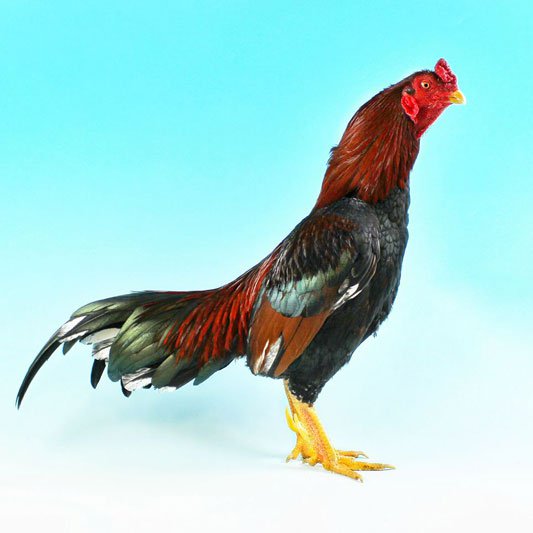This Standard refers to the small Asil (often called ‘Reza’ Asil, a term which applies only to birds of 3½ – 4 lb, or ‘Rajah’ Asil, which is a term not used at all in India). The Asil is probably the oldest known breed of gamefowl, having been bred in India for its fighting qualities for over 2,000 years. The name Asil is derived from Arabic and means ‘of long pedigree’. In different dialects it can be spelled ‘Asil’, ‘Aseel’ or ‘Asli’. In its native land the Asil was bred to fight, not with false spurs, but rather with its natural spurs covered with tape, the fight being a trial of strength and endurance. Such was the fitness, durability and gameness of the contestants that individual battles could last for days. This style of fighting produced a powerful and muscular bird with a strong beak, thick muscular neck and powerful legs, together with a pugnacious temperament and stubborn refusal to accept defeat.
Never very numerous in Britain, the Asil has nevertheless always attracted a few dedicated admirers prepared to cope with its inborn desire to fight, a characteristic shared by the females, who are poor layers but extremely good mothers.




